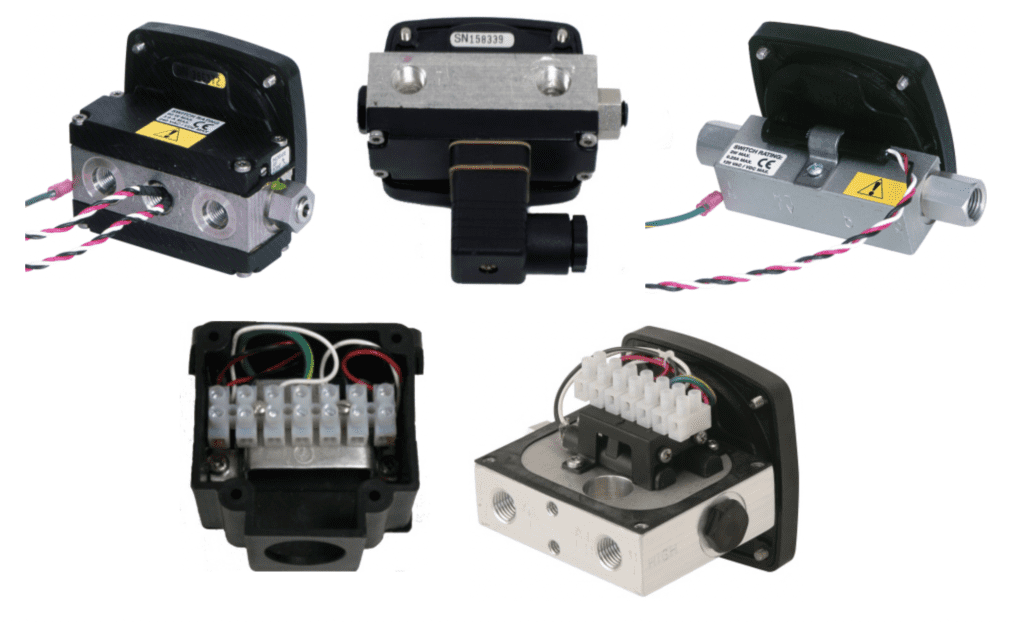Switches and Relays Features
Switches are offered with SPST (single pole single throw) Normally open or Normally closed outputs, or SPDT (single pole double throw) outputs.
Mid-West Instrument hermetically sealed reed switches are offered with or without enclosures, depending on the differential pressure gauge/switch model. Most models with enclosures carry a NEMA 4X environmental rating. Optionally they may carry a 3rd party listing for use in Hazardous Locations. Electrical Interface may be via flying leads, Din-Connector Plug, or 7 Position Terminal Strip. Virtually all switch options are CE marked for compliance with the RoHS and Low Voltage directives. Optionally select options which carry 3rd party approval for use North American Div. 1 and Div. 2 hazardous locations, EU Category 2 Locations (ATEX approval), Korean hazardous Locations (KOSHA). For complete safety ratings or certifications refer to our individual model Specifications Sheets.
Mid-West Instrument reed switches are field adjustable within a predefined percentage of the full-scale range of the instrument, depending on the model (see product specification sheet for adjustability range). All differential pressure switches are preset to 50% of full-scale range unless otherwise specified by the customer at the time of order placement. Two switch units can be set independent of each other.
Select our relay options for loads requiring more power or for switching high inductive circuits such as those incorporating solenoids or motors. Relay output(s) requires electrical input power to operate.


